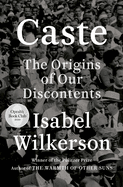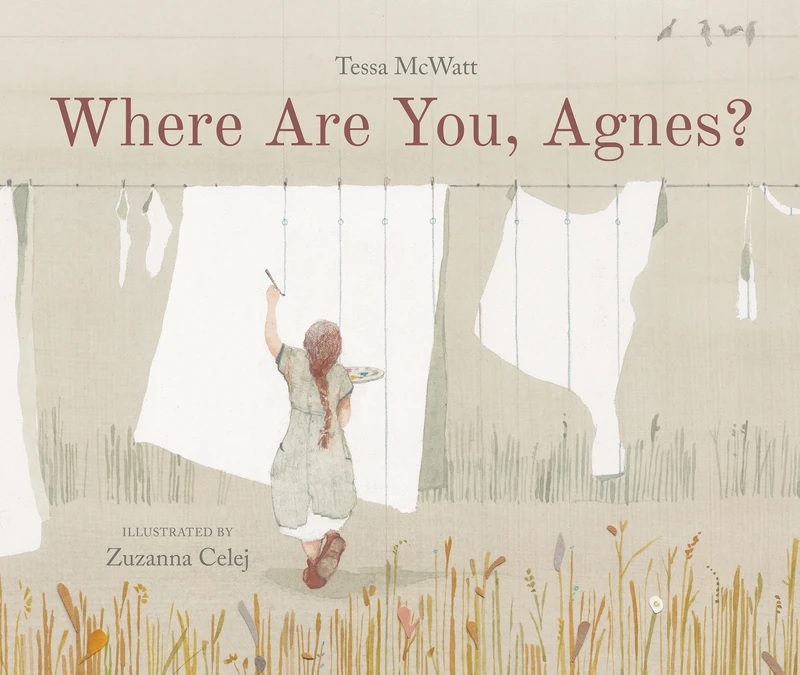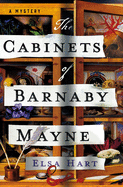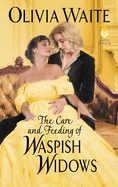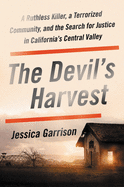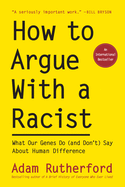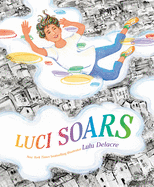Friday, August 14, 2020
I read cookbooks the way some people read travel guides. I spend hours imagining myself re-creating impeccable meals we enjoyed at fancy restaurants on our travels.
 I have not been successful replicating many of those culinary wonders: in London, I made repeated visits to Dishoom. Physically weighty, Dishoom: From Bombay with Love (Bloomsbury, $35) is a thrilling tour of the region by cousins Kavi and Shamil Thakrar with their chef Naved Nasir, via hand-drawn maps, archival photos and personal essays. The recipes almost vibrate with the scents of cardamom and cumin. I would like to brag about my rajma--savory kidney beans spiced with garam marsala (didn't happen)--yet the Dishoom granola recipe is foolproof.
I have not been successful replicating many of those culinary wonders: in London, I made repeated visits to Dishoom. Physically weighty, Dishoom: From Bombay with Love (Bloomsbury, $35) is a thrilling tour of the region by cousins Kavi and Shamil Thakrar with their chef Naved Nasir, via hand-drawn maps, archival photos and personal essays. The recipes almost vibrate with the scents of cardamom and cumin. I would like to brag about my rajma--savory kidney beans spiced with garam marsala (didn't happen)--yet the Dishoom granola recipe is foolproof.
 Pickled vegetables were my favorite component of most meals we ate in Tokyo. Japanese Pickled Vegetables by Machiko Tateno (Tuttle, $16.99) has a clean layout and glossy photos that sing "You can do this." I longed for the bright zinging taste of vivid carrot chunks, startling daikon slices, sweet-and-sour green cucumber ribbons, but muttered "too many hard-to-get ingredients--kombu seaweed?" Later, while staring down another bowl of pandemic ramen, I took the plunge. Raiding the pantry and fridge, I was able to make fresh cucumber pickles, quick carrot, radish, napa cabbage pickles and kimchi.
Pickled vegetables were my favorite component of most meals we ate in Tokyo. Japanese Pickled Vegetables by Machiko Tateno (Tuttle, $16.99) has a clean layout and glossy photos that sing "You can do this." I longed for the bright zinging taste of vivid carrot chunks, startling daikon slices, sweet-and-sour green cucumber ribbons, but muttered "too many hard-to-get ingredients--kombu seaweed?" Later, while staring down another bowl of pandemic ramen, I took the plunge. Raiding the pantry and fridge, I was able to make fresh cucumber pickles, quick carrot, radish, napa cabbage pickles and kimchi.
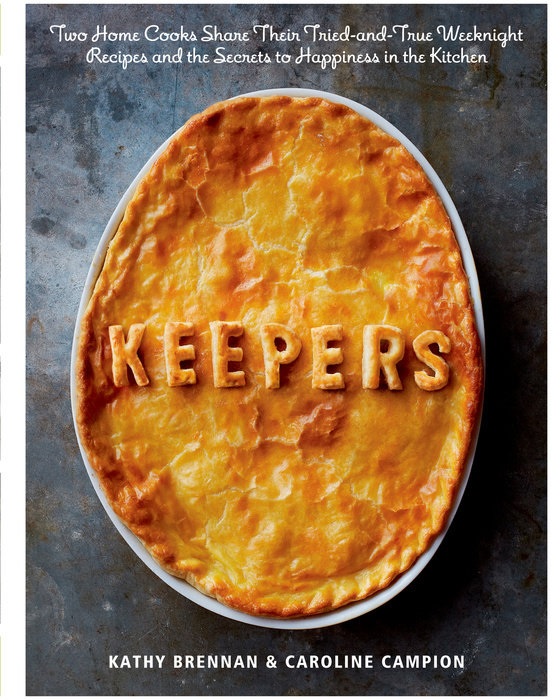 And this brings me to Keepers: Two Home Cooks Share Their Tried-and-True Weeknight Recipes and the Secrets to Happiness in the Kitchen (Rodale, $26.99). The subtitle says it all. Kathy Brennan and Caroline Campion's sage advice, lighthearted humor and you-can-do-this cheerleading charm had me at the endpapers with its 23-point manifesto. By my estimation, I have cooked more than 300 meals since March 10. I am broken. Brennan and Campion put me back together. The pantry list alone was worth the price. "One-Bowl Summer Spaghetti" was a big hit, and Japanese-Style "Meat and Potatoes" is requested weekly, earning its place as a keeper. --Lisa Von Drasek, curator, University of Minnesota Libraries
And this brings me to Keepers: Two Home Cooks Share Their Tried-and-True Weeknight Recipes and the Secrets to Happiness in the Kitchen (Rodale, $26.99). The subtitle says it all. Kathy Brennan and Caroline Campion's sage advice, lighthearted humor and you-can-do-this cheerleading charm had me at the endpapers with its 23-point manifesto. By my estimation, I have cooked more than 300 meals since March 10. I am broken. Brennan and Campion put me back together. The pantry list alone was worth the price. "One-Bowl Summer Spaghetti" was a big hit, and Japanese-Style "Meat and Potatoes" is requested weekly, earning its place as a keeper. --Lisa Von Drasek, curator, University of Minnesota Libraries
The Boy in the Field
by Margot Livesey
The Boy in the Field is a stunning novel of tenderness, interconnectedness, cause and effect by Margot Livesey (The Flight of Gemma Hardy; Mercury). Matthew, Zoe and Duncan are walking home from school one day when they find him, in a field with cows, swallows, bluebottles: a beautiful young man bloodied and unconscious. He speaks one word: "Cowrie," Zoe reports to the police. "Cowslip," says Duncan. "Coward," says Matthew. With their discovery, they save his life.
The teenaged siblings are close, loving and very different from one another. Matthew, the eldest, is thoughtful. He hopes to become a detective one day, and becomes obsessed with solving the mystery of who hurt the boy in the field, and why. He puzzles over motivations. Zoe has "a gift for finding things: birds' nests, their mother's calculator, a missing book, a secret." She worries over her parents' relationship and explores her own first sexual experiences; she is drawn to the ways in which people come together and apart. Duncan, the youngest, is observant, almost preternaturally sensitive and a gifted painter. Finding the boy will start him toward a discovery about his own life that might be destructive.
Livesey's deceptively simple prose renders each sibling as both sweet and complicated. Their shared experience, finding the injured young man, begins for each of them a different kind of acceleration: into adulthood, out of innocence, into reconfigured connections. Despite the violent crime related to its title and the insecurities that arise for various characters along the way, this brilliant novel offers a sense of beauty and safety in its quiet ruminations. --Julia Kastner, librarian and blogger at pagesofjulia
Discover: A single discovery touches three siblings' lives in surprising ways in this poignant, gleaming story.
The Orphan Collector
by Ellen Marie Wiseman
When Ellen Marie Wiseman wrote The Orphan Collector, little did she know that a story set during the 1918 pandemic would drop in the middle of another. "No children played in the alley below, no women hurried out to run errands, no men whistled or smoked on their way home from work." It's September 1918, and deadly flu is sweeping the globe. In Philadelphia people are instructed to stay inside, wear masks and practice good hygiene--not easy in a crowded city with areas of crushing poverty. Thirteen-year-old Pia lives with her mother and infant twin brothers and they, like other immigrants, are mistrusted for their unfamiliar ways. Bernice, Pia's neighbor, scorns the German "newcomers" to the United States, because "They weren't like her and her family, whose relatives had lived in South Philly since the 1830s.... She wouldn't have been surprised to learn the flu started with them."
After her mother succumbs to the flu, Pia cares for her brothers until a well-meaning but catastrophic decision to leave them to look for food leads to their abduction by Bernice. Pia is sent to an orphanage and spends the next several years looking for her brothers. "Almost everyone had been touched by the flu," she thinks. "But... at least they knew what happened to them." Bernice's xenophobia becomes justification for her shocking behavior, with terrible repercussions for untold numbers of children. Wiseman (The Plum Tree) shows how humans are capable of great cruelty but also great compassion in this ultimately uplifting, compelling read. --Cindy Pauldine, bookseller, the river's end bookstore, Oswego, N.Y.
Discover: The 1918 flu pandemic is the setting for this emotionally crafted historical fiction about one orphan's search for her missing brothers.
Mystery & Thriller
When She Was Good
by Michael Robotham
In Michael Robotham's gripping When She Was Good, psychologist Cyrus Haven digs into the past of Evie Cormac, the teenage girl he encountered in Good Girl, Bad Girl. As a child, she'd been found, filthy and feral, hiding in a house containing the corpse of a man who'd been tortured to death months earlier. Evie has never spoken about what happened, or even disclosed her real name and age. Authorities put her in a home for troubled teens after concluding the dead man was a pedophile who had kidnapped her.
But Evie is far from safe. A killer is still hunting her, and the only way to stop him is for her and Cyrus to confront her terrifying past and expose the truth about how and why she ended up in that murder house.
The Edgar-nominated Good Girl, Bad Girl establishes the relationship between Cyrus and Evie, but this well-paced follow-up provides sufficient background information. Like Joseph O'Loughlin from Robotham's long-running series, Cyrus is a psychologist with acute insight into the most damaged of people. This comes from having experienced trauma himself in his teenage years, a family tragedy he's still grappling with. He's the only adult Evie trusts with secrets from her past, but she's no damsel needing to be saved. She's strong-willed and resourceful and a "truth wizard," someone who can always spot lies. Though Cyrus and Evie know they will never outrun their demons, their determination to survive and refusal of victimhood are what make this series so powerful. --Elyse Dinh-McCrillis, blogger at Pop Culture Nerd
Discover: A psychologist helps a teenage girl revisit her tragic past in order to stop a killer in this consuming psychological thriller.
The Silence of the White City
by Eva García Sáenz, transl. by Nick Caistor
Already adapted into a film in its home country, The Silence of the White City is Spanish novelist Eva García Sáenz's complex mystery debut. She grounds the story in the family ties surrounding a series of murders that turn a summer of celebration into a nightmare.
During the summer festivals in Vitoria-Gasteiz, capital of Spain's Basque region, Inspector Unai "Kraken" López de Ayala is called to a double murder scene at a cathedral. The victims, a man and a woman, both 20 years old, lie naked, their hands resting on each other's faces, folkloric symbols nearby and bees trapped in their mouths. Everyone recognizes the MO as identical to a series of murders from 20 years earlier. Kraken can't comprehend how the killer, celebrity archeologist Tasio Ortiz de Zárate, has struck again. Caught by his identical twin brother, Ignacio, a police inspector, Tasio has spent 20 years in jail. As Kraken looks into the twins' twisted past and falls for his beautiful but married supervisor, the killer circles closer, while flashbacks to 1969 slowly reveal the startling motive behind the murders.
Family and community bonds frame Kraken's investigation, and sibling relationships, both warm and estranged, are a recurring theme. The proverb "For peace, a Hail Mary, which means... keep quiet like a coward" describes a local philosophy that has unwittingly obfuscated the truth. Set against a backdrop of tradition and revelry, The Silence of the White City twists and swerves its way to a wrenching resolution that will leave readers speechless. --Jaclyn Fulwood, blogger at Infinite Reads
Discover: A police inspector in Spain's Basque region investigates the apparent resurgence of serial murders from 20 years earlier, especially perplexing since the killer is in prison.
The Fate of a Flapper
by Susanna Calkins
Susanna Calkins (Murder Knocks Twice; A Murder at Rosamund's Gate) brilliantly captures the vibe of the Prohibition era in The Fate of a Flapper. Gina Ricci, a pretty but practical woman, is ostensibly a drugstore employee. In reality though, she's a waitress at the speakeasy in the basement. Gina, whose hobby is photography, has a quick eye for things that are off-kilter, and her suspicions are immediately aroused by a party that's drinking too heavily and flamboyantly one evening.
The next day, Fruma, one of the women who was part of the rambunctious group, turns up dead. It's an apparent cocaine overdose, but the dead woman lived next to Gina's cousin Nancy, a Chicago policewoman, who is determined to solve a murder in order to boost her status within the patriarchal department. Nancy talks Gina into helping her look a little further into Fruma's background, and the two women quickly realize that Fruma's death was no accident.
With a noir flair, balanced by Gina's no-nonsense attitude, The Fate of a Flapper is a delightful historical mystery, which can be read as a standalone although it is the second in a series. Calkins does an excellent job balancing hallmarks of the era--the flappers, the corrupt cops, the moonshiners and the stock market gamblers--with enough depth to make the characters truly absorbing. Fans of Rhys Bowen's Molly Murphy or Kerry Greenwood's Phryne Fisher will indubitably enjoy Susanna Calkins's Gina Ricci. --Jessica Howard, bookseller at Bookmans, Tucson, Ariz.
Discover: This delightful historical mystery stars a no-nonsense speakeasy waitress as she investigates the death of a patron.
The Cabinets of Barnaby Mayne
by Elsa Hart
Elsa Hart (The White Mirror; City of Ink) has previously written novels set in 18th-century China, but in The Cabinets of Barnaby Mayne she explores a different place: London in 1703. Cecily Kay, wife of an English diplomat, has returned to London, hoping to identify some of the plant specimens she has collected abroad.
Cecily turns to Sir Barnaby Mayne, one of the most noted collectors in English society, whose house is crammed with plants, animals, precious gems, skeletons, rocks and sundry other items he has procured. Sir Barnaby is hosting a tour of his home for Cecily and several other collectors and natural historians when he's abruptly called away. The guests wander the house, until screams alert everyone, and they find Sir Barnaby's bloody corpse in the library. Sir Barnaby's gentle assistant shouts that he is the murderer, then flees the scene.
This scenario has a false ring to Cecily, whose naturally inquisitive mind soon realizes any number of the guests could have slipped to the library unseen. She begins a surreptitious investigation into the lives of the other members of the tour and of the Mayne household--and quickly finds her own life threatened in response.
Hart's meticulous research shows clearly in The Cabinets of Barnaby Mayne, but never overshadows the intrigue of the mystery and the nuances of Cecily's character. A fascinating figure, Cecily has intelligence and bravery that make her the perfect lens through which modern readers can explore the era. Readers of historical fiction or thoughtful mysteries are both sure to love The Cabinets of Barnaby Mayne. --Jessica Howard, bookseller at Bookmans, Tucson, Ariz.
Discover: In this intriguing historical mystery, a scholarly Englishwoman turns her attention from natural history to murder.
Romance
The Care and Feeding of Waspish Widows
by Olivia Waite
In The Care and Feeding of Waspish Widows, Olivia Waite continues her sapphic Feminine Pursuits series with a historical romance set in 1820 England. This slow-burning love story is characterized by a profound sense of time and place, with deeply researched professions and politics as well as sensuous prose.
Agatha is a middle-aged widow who needs bees removed from the colony they've made in one of her printing press's storage rooms. Penelope, the town beekeeper, comes over to re-home the bees. It's an unconventional meet-cute, but it works for these two women and introduces them to each other's life's work. Waite is clearly as passionate about her characters' professions as the women are themselves--both historical beekeeping and printing drive the plot and characterization here.
Waite's words are carefully placed, with repeating themes and phrases that echo earlier scenes and sentiments. As the queen is put on trial by her husband for adultery, Agatha flirts with revolution, printing seditious songs by the Widow Wasp. But without a husband, she finds herself vulnerable to government threats and questioning her future. Meanwhile, Penelope is married to her brother's life partner, a marriage of convenience that has suited them both fairly well until this point. Waite threads questions of safety versus freedom throughout this romance. If marriage offers women protection but restricts their options, is it worth the trade?
Readers will cheer for women and queer people of all genders as Penelope and Agatha find their way through obstacles personal and political, to a future with each other--and their bees. --Suzanne Krohn, editor, Love in Panels
Discover: Olivia Waite's The Care and Feeding of Waspish Widows pairs a beekeeper and a printer in a lush romance between two women in 19th-century England as they find a way to balance freedom and safety.
Social Science
Wandering in Strange Lands: A Daughter of the Great Migration Reclaims Her Roots
by Morgan Jerkins
In a stunning hybrid of memoir, cultural criticism and ethnography, Morgan Jerkins, Zora senior editor and author of This Will Be My Undoing, untangles the webs of revisionist history that have plagued Black communities in the United States since well before the Great Migration. Using her own family's story as a case study, she retraces her ancestors' paths, traveling from her New York City home to the Lowcountry, Louisiana, Oklahoma and California in search of answers.
"This was the impetus of my trip: a recovery from forgetfulness, a pilgrimage from the lands abandoned to the routes traversed," she writes, detailing how the 1916-1970 mass exodus of Black Americans from the South to the North, West and Midwest provided economic opportunities but disconnected individual families. Because of this fracture--and its cause, racism--many Black families' customs and culture have been relegated to oral history, erased from the official record.
"There is more potential in these black and native stories than one might think, but because of migration and the arbitrary, racist categorizations of laws and rolls, families have been separated," she explains. "Our stories have become bifurcated as a result: one side is the official story, and the other is the one we whisper to our relatives for generations." In Wandering in Strange Lands, Jerkins sets the record straight by exploring just how deep these root systems go. She avoids making any sweeping generalizations, instead choosing to carefully lay out how complex, fraught and awe-inspiring is the fabric of Black history in the U.S. In her powerful conclusion, she argues there is no promised land in the U.S. for the Black community: Black people are the promised land. --Lauren Puckett, freelance writer
Discover: The author of This Will Be My Undoing tracks down her family's roots--and the roots of centuries-old Black disenfranchisement in the U.S.--in this bold work of memoir and ethnography.
Caste: The Origins of Our Discontents
by Isabel Wilkerson
Pulitzer Prize-winning journalist Isabel Wilkerson (The Warmth of Other Suns) offers a singular and vital perspective on American society with Caste: The Origins of Our Discontents. This examination of caste and its consequences on every aspect of culture is unusual, eye-opening and of life-or-death importance. As in her previous work, which she continues and deepens here, Wilkerson lives up to the scope and significance of her subject matter, delivering a book that is deeply researched, clearly structured, well-written and moving.
The root of so many social ills in the United States, Wilkerson argues, is not precisely racism but casteism, which is closely linked to the concepts of race invented and reinforced since before the country's founding. "Caste and race are neither synonymous nor mutually exclusive," she writes, and then explicates and defines her terms precisely, with the support of exhaustive research. "Caste is insidious and therefore powerful because it is not hatred, it is not necessarily personal. It is the worn grooves of comforting routines and unthinking expectations, patterns of a social order that have been in place for so long that it looks like the natural order of things."
Wilkerson's understanding of caste proposes a nuanced take on the Trump election: many working-class white voters did not in fact vote against their interests, but rather prioritized one interest--upholding the caste system--over others, including access to health care, financial stability and clean air and water. Caste is a thorough, incisive investigation of the often invisible workings of American society. Original, authoritative and exquisitely written, its significance cannot be overstated. --Julia Kastner, librarian and blogger at pagesofjulia
Discover: In this meticulously researched and beautifully crafted book, Pulitzer Prize-winning journalist Wilkerson argues that the U.S. has a race-based caste system.
The Devil's Harvest: A Ruthless Killer, a Terrorized Community, and the Search for Justice in California's Central Valley
by Jessica Garrison
"I was a nice man before they killed my sister," Jose Manuel Martinez explained to Jessica Garrison in an interview. Garrison, BuzzFeed's West Coast investigations editor, learned of Martinez in 2014 when law enforcement reported capturing a professional hitman. The Devil's Harvest is a chilling and hypnotic account of Garrison's discussions with Martinez, stunningly blended with in-depth research into his crimes, the culture that spawned and spurred them, the authorities who chased him and the carnage left in his wake.
An adoring and gregarious family man, Martinez turned toward fierce protection of women and children after his older sister was murdered. Asked to avenge the rape of a friend's sister, he readily agreed and found he liked killing. Martinez lived in California's Central Valley, where income disparity is the state's highest. Martinez's "greatest asset" as a killer was understanding America's dark truth. "If you kill the 'right people'--people who are poor, who are not white... and who don't have anyone to speak for them--you can get away with it." He had found an ideal place to ply his trade.
A story with a complicated backdrop, The Devil's Harvest includes ideal measures of nearly half a century of Central Valley history (grape strikes, the rise of drug cartels, anti-immigrant sentiment) that reinforce the narrative and intrigue. Martinez's 35-year run of mayhem was dreadful; the ongoing concept that some lives count more than others is a plague. Garrison's writing is enthrallingly thriller-esque while it sheds light on real-world horrors. --Lauren O'Brien of Malcolm Avenue Review
Discover: A journalist sits down with a hitman and law enforcement officials to get the engrossing truth behind a decades-long killing spree in California's Central Valley and beyond.
How to Argue with a Racist: What Our Genes Do (and Don't) Say About Human Difference
by Adam Rutherford
Geneticist Adam Rutherford is no stranger to the contradictions of public scientific discourse. But some, like the nebulous histories of science and philosophy that surround discussions about racism, are more nefarious than others and must be faced head on. Rutherford writes, "I want to show that although, historically, science has been misused to institutionalize racism, today... science can and should be deployed as an anti-racist tool." Proffering How to Argue with a Racist as a "weapon," Rutherford clearly and effectively dissects the elements of anthropology, history and biology that fed into what became the study of genetics, and then social co-opting of genetics, regarding race in Western European cultures.
Rutherford's preface places the book in the context of the novel coronavirus and its racial aspects, and the institutionalized anti-Blackness that led to the death of George Floyd and subsequent global protests. Chapters are broken into topics that racists often deploy, addressing skin color, ancestry, myths about Blackness and athletic ability, and misconceptions about brain size and function. He systematically deconstructs where and how these biases arose, such as those in a 2002 genetics paper by Noah Rosenberg that is often quoted by racists to assert a scientific argument, and why the science actually does not support these claims. Rutherford does not shy away from taking a side, and tacitly demonstrates that scientists and other academics should take sides when facts are used in questionable ways. How to Argue with a Racist is filled with footnotes that provide both levity to a heavy subject matter and further explanation when needed. --Michelle Anya Anjirbag, freelance reviewer
Discover: A geneticist offers a timely discussion on how to counter racist arguments from a scientific point of view.
Children's & Young Adult
Where Are You, Agnes?
by Tessa McWatt, illus. by Zuzanna Celej
Tessa McWatt's gorgeously written debut picture book, Where Are You, Agnes?, fictionalizes the childhood of Canadian American artist Agnes Martin (1912-2004). McWatt imagines what could have inspired the abstract expressionist's paintings through tidbits from her biography and quotations from interviews. The meditative text presents the young Martin as a curious child with a strong connection to her grandfather, who encouraged the budding artist to see the beauty in the everyday. Watching a rainbow across the spare Saskatchewan plains, he covers her eyes and asks if it is still beautiful: "Agnes thought for so long that it seemed she had forgotten the question. 'Yes!' she cried. Agnes felt something tingling inside." The family moves away from her beloved landscapes and her grandfather dies. But still, Martin could often be found creating art or thinking about the beauty around her--so much so that her family often asks, "Where are you, Agnes?" to pull her away from her reverie.
The illustrations, done by Zuzanna Celej (The Map of Good Memories) in watercolor, collage and colored pencils on paper, hint at the paintings for which Martin became most famous: gridded pieces done in neutral colors and faint lines. Celej's stark whites and earthy browns capture the minimalism of the artist's work, while also injecting bright splashes of joyous reds and sharp geometric shapes in a reflection of Martin's later paintings. The philosophical narrative and nature-filled illustrations combine to create a contemplative work that celebrates an underappreciated woman artist. --Shelley Diaz, supervising librarian, BookOps: New York Public Library & Brooklyn Public Library
Discover: This debut picture book reverently reimagines the childhood of abstract expressionist painter Agnes Martin.
Luci Soars
by Lulu Delacre
With more than three dozen publishing credits, bilingual author/illustrator Lulu Delacre (Us, in Progress) knows how to balance text and art to achieve memorable literary results. In Luci Soars, Delacre introduces a girl whose noticeable difference--she doesn't have a shadow--draws out bullies, but she learns she can rise above her detractors.
Delacre begins her story in muted black-and-white as baby Luci grows to toddlerhood, her missing shadow unremarkable to loving family and friends: " '¡Qué linda!' was the way people saw me." As she matures, her lack draws stares, for which she compensates by walking "always in other people's shadows" even though she "longed to be in the light." At school, her bravery in stepping out into the open is met with pointed fingers, laughter and icy stares from the "mean shadows" who are her peers. Wiping her tears, she examines the blank space behind and wonders if the shadow is what keeps others on the ground.
Delacre deftly, cleverly captures Luci's shifting perspective in literal page-turns: she momentarily beckons readers into the white space of Luci's tearful thoughts, then returns outward with a fresh point of view. Suddenly, the bullies shrink against Luci's newly discovered, ascending self-reliance. Abandoning the black-and-white visuals, Delacre imbues Luci with vibrant hues, her jeans a cerulean blue, her shirt full of bright polka dots, the air around her aglow. With each consecutive spread, colors intensify as Luci claims the "superpower that makes me strong." By book's end, Luci uses that strength to break through the page, directly addressing readers: "I can change how I look at things.../ and so can you." Through her vivid new hero, three-time Pura Belpré Honoree Delacre encourages young audiences to step out from judgmental, unwelcoming shadows and soar. --Terry Hong, Smithsonian BookDragon
Discover: A girl born without a shadow discovers her superpower to rise above her grounded--stuck--bullies by shifting her perspective upward.
| Advertisement Meet belle bear! |



